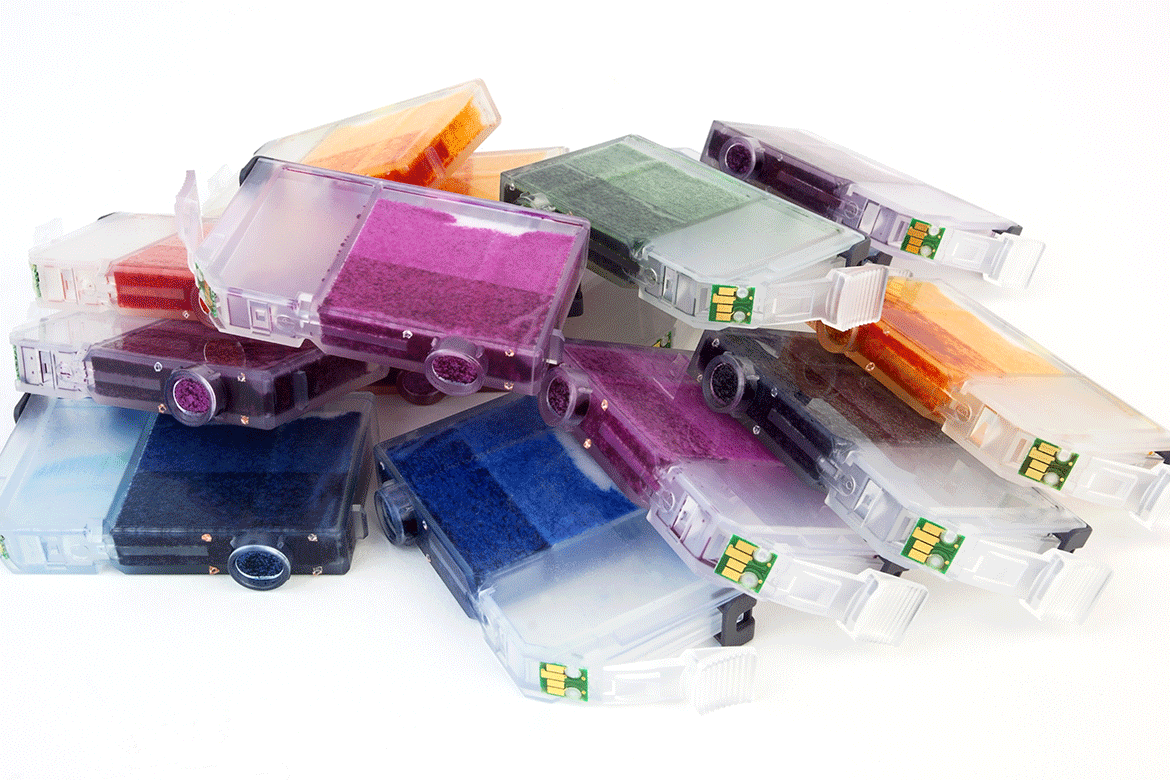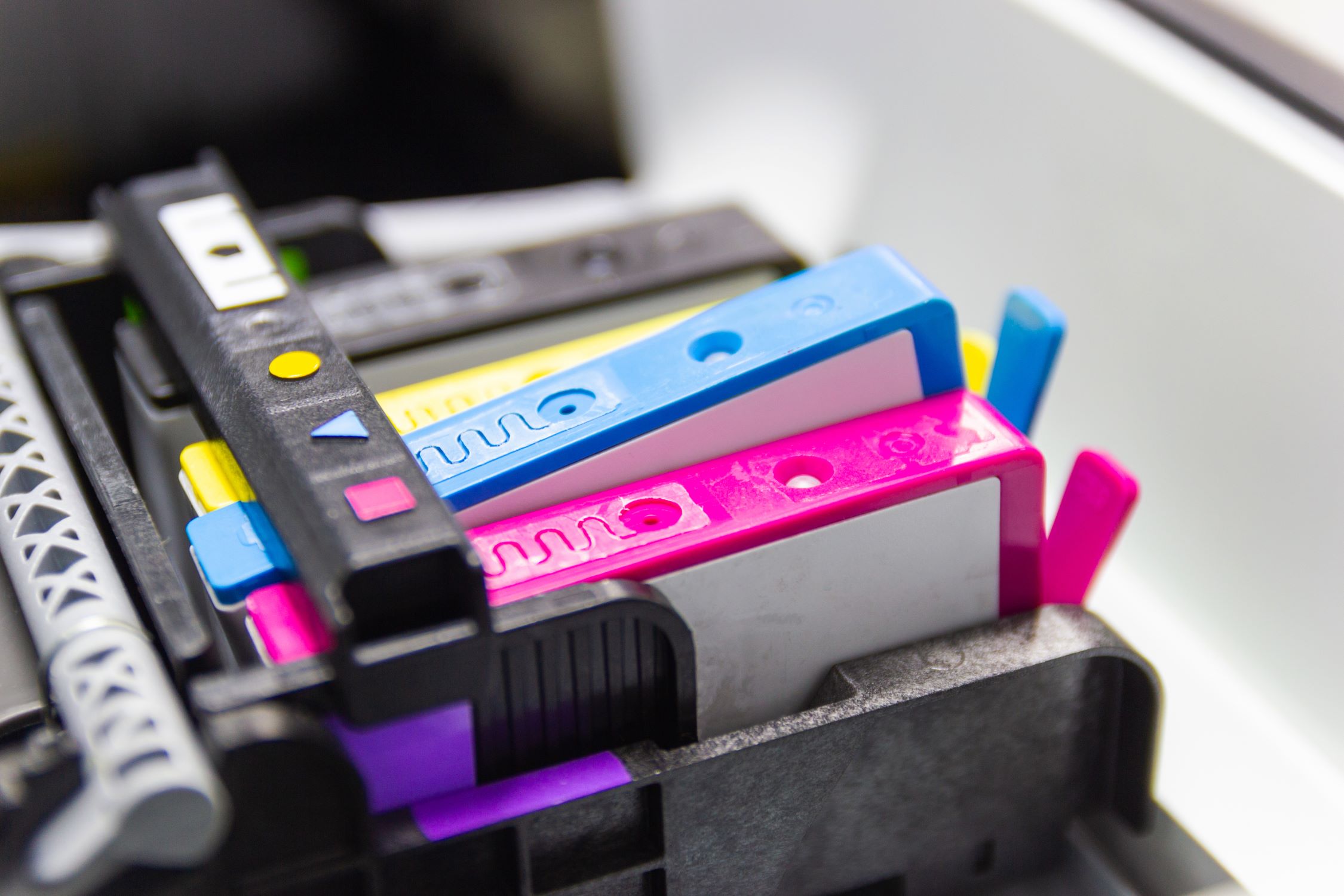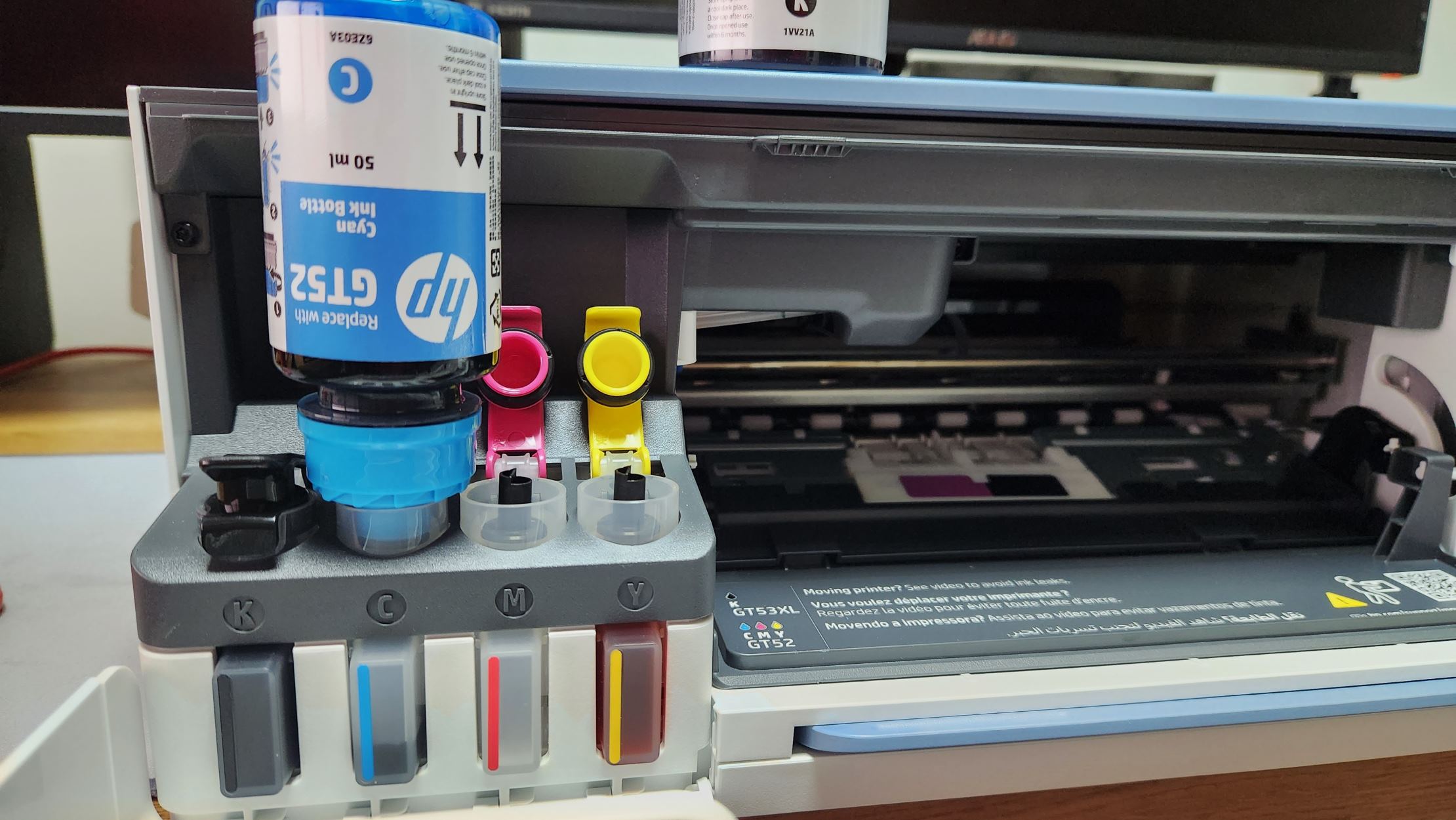How long do printer ink cartridges last? It’s a question that plagues every home and office user, especially when that dreaded low-ink warning pops up. The answer, however, isn’t as simple as a single number. Factors like printing frequency, ink type, and even environmental conditions play a significant role in determining how long your ink cartridges will last.
This article will delve into the various factors that affect ink cartridge lifespan, providing insights into how to estimate their longevity, understand their components, and even explore eco-friendly practices for ink cartridge disposal.
Factors Affecting Ink Cartridge Lifespan

The lifespan of a printer ink cartridge can vary greatly depending on several factors. Understanding these factors can help you maximize the longevity of your cartridges and minimize printing costs.
Printing Frequency
The more you print, the faster your ink cartridges will deplete. This is a straightforward relationship: the more pages you print, the more ink you use. For instance, a user printing only a few documents per week might see their cartridges last for months, while a business printing hundreds of pages daily will need to replace cartridges more frequently.
Printing Styles
Different printing styles can significantly impact ink consumption. Printing text-only documents consumes less ink than printing images or graphics.
- Text-only documents, like emails and reports, primarily use black ink, leading to slower depletion of black cartridges.
- Printing photos and graphics involves using multiple colors, leading to faster depletion of all color cartridges.
Printer Model and Ink Type
The specific printer model and the type of ink used play a crucial role in determining cartridge lifespan.
- Some printer models are designed for high-volume printing and use larger cartridges, extending the lifespan compared to models meant for occasional use.
- Ink type also influences longevity. Pigment-based inks are generally more durable and fade-resistant, but they can be more expensive and deplete faster than dye-based inks, which are often more affordable but less durable.
Environmental Conditions
Extreme temperatures and humidity can affect ink cartridge performance and lifespan.
- High temperatures can cause ink to dry out faster, leading to clogged printheads and reduced cartridge lifespan.
- High humidity can also lead to ink clogging, especially if the cartridges are not stored properly.
Ink Cartridge Quality
The quality of ink cartridges can also affect their lifespan.
- OEM (Original Equipment Manufacturer) cartridges are designed specifically for your printer model and offer optimal performance and longevity. However, they are generally more expensive.
- Compatible cartridges, manufactured by third-party companies, can be a more affordable option. However, they may not offer the same performance and longevity as OEM cartridges. Some compatible cartridges might be prone to clogging or produce lower-quality prints, potentially shortening their lifespan.
The lifespan of a printer ink cartridge depends on how much you print and the type of ink used. Sometimes, you might want to print a document in a specific order, like a report with pages in numerical order.
That’s where the “collate” setting comes in handy! You can learn more about what does collate mean in print to make sure your prints are organized. If you’re printing a lot of photos, you might need to replace your ink cartridges more often than if you’re just printing documents.
Estimating Ink Cartridge Lifespan: How Long Do Printer Ink Cartridges Last

Accurately predicting how long a printer ink cartridge will last can be tricky, as it depends on various factors. However, understanding average printing needs and cartridge specifications can provide a good estimate.
Estimating Ink Cartridge Lifespan Based on Average Printing Needs
A general guideline for estimating ink cartridge lifespan is to consider the average number of pages printed per month. For casual users who print a few documents or photos weekly, an ink cartridge might last several months. However, for users printing frequently, such as businesses or students, cartridges may need replacement every few weeks.
Ink Cartridge Lifespan Based on Printing Styles
Different ink cartridges offer varying page yields, which is the estimated number of pages a cartridge can print before needing replacement. This page yield is influenced by printing style, such as the amount of ink used per page.
Typical Page Yields for Different Ink Cartridge Models and Printing Styles
| Ink Cartridge Model | Text Only (Black) | Mixed Text & Graphics (Color) | Photo Printing (Color) |
|---|---|---|---|
| HP 63XL Black Ink Cartridge | 1,000 pages | 400 pages | 200 pages |
| Canon PG-245 Black Ink Cartridge | 800 pages | 300 pages | 150 pages |
| Epson 27XL Black Ink Cartridge | 1,200 pages | 450 pages | 250 pages |
Tips for Maximizing Ink Cartridge Lifespan
- Use Draft Mode for Everyday Printing:This setting reduces ink usage by lowering print resolution, suitable for documents that don’t require high quality.
- Print in Black and White When Possible:Color printing uses more ink than black and white, so opting for black and white printing when feasible can extend cartridge lifespan.
- Avoid Printing Unnecessary Pages:Preview documents before printing to ensure you’re only printing necessary pages, preventing wasted ink.
- Optimize Print Settings:Adjust print settings like resolution and ink density to match the document’s needs. For instance, for everyday documents, a lower resolution may suffice, while photos might require a higher resolution.
- Clean the Print Head Regularly:A clogged print head can lead to ink waste, so regular cleaning helps maintain optimal print quality and reduces ink consumption.
- Use Genuine Ink Cartridges:Non-genuine cartridges might offer a lower price, but they can impact print quality and potentially damage your printer, ultimately leading to higher ink costs in the long run.
Understanding Ink Cartridge Components
Ink cartridges are complex systems designed to deliver ink efficiently and consistently, contributing significantly to the quality and longevity of your prints. Understanding the components of an ink cartridge provides insights into how they function and the factors influencing their lifespan.
Ink Cartridge Components
The components of an ink cartridge work in harmony to ensure a smooth and reliable ink delivery process.
- Ink Reservoir:This is the primary component, containing the actual ink. The reservoir is typically made of a durable plastic material designed to hold the ink securely and prevent leaks. The size and shape of the reservoir vary depending on the ink cartridge type and the printer model.
- Ink Cartridge Housing:This acts as a protective shell for the ink reservoir and other components. The housing is usually made of plastic and features a variety of openings and channels for ink flow and electrical contacts. The design of the housing is crucial for ensuring a proper fit within the printer and preventing damage during installation and removal.
- Ink Delivery System:This is the heart of the ink cartridge, responsible for transporting ink from the reservoir to the printhead. It typically includes a series of channels, pumps, and valves that work together to control the flow of ink. The ink delivery system is designed to provide a consistent and precise ink flow, ensuring high-quality prints.
- Printhead:This is the component responsible for depositing ink onto the paper. It contains a series of tiny nozzles that release ink droplets with high precision. The printhead is directly connected to the ink delivery system and is responsible for generating the image on the paper.
The printhead is a crucial component in achieving high-quality prints, and its design and functionality directly impact print resolution and longevity.
- Electrical Contacts:These are conductive elements located on the cartridge housing that establish communication between the cartridge and the printer. They transmit information about the ink level, cartridge type, and other important data. The electrical contacts ensure proper communication between the cartridge and the printer, allowing the printer to monitor ink levels and control the ink delivery process.
Ink Cartridge Design and Efficient Ink Delivery
The design of ink cartridges is paramount in ensuring efficient ink delivery.
- Ink Cartridge Design:The design of ink cartridges is crucial for ensuring efficient ink delivery and preventing ink leaks. Modern ink cartridges often feature innovative features like air-tight seals and pressure-regulating mechanisms to maintain optimal ink flow. The design also incorporates features that prevent clogging and ensure consistent ink delivery throughout the cartridge’s lifespan.
The cartridge’s shape and size are also important considerations, ensuring a secure fit within the printer and preventing damage during installation and removal.
- Ink Flow Control:The ink delivery system is meticulously designed to regulate the flow of ink from the reservoir to the printhead. This system typically includes a series of pumps, valves, and channels that work together to control the ink flow rate and pressure.
The precise control over ink flow ensures that the right amount of ink is delivered to the printhead at the appropriate time, resulting in high-quality prints without smudging or bleeding.
- Ink Cartridge Technology:Advancements in ink cartridge technology have significantly improved the efficiency and longevity of ink cartridges. Features like microchip technology allow the printer to monitor ink levels and automatically switch to a new cartridge when necessary. Some cartridges even feature self-cleaning mechanisms that prevent clogging and maintain optimal ink flow.
The use of specialized ink formulas and advanced printing techniques further contribute to the longevity and efficiency of ink cartridges.
Role of Ink Cartridge Technology in Print Quality and Longevity
Ink cartridge technology plays a significant role in optimizing print quality and longevity.
- Print Quality:The ink cartridge is a critical component in achieving high-quality prints. The ink formula, the printhead design, and the ink delivery system all contribute to the overall print quality. Modern ink cartridges often feature specialized ink formulas designed to deliver vibrant colors, sharp details, and consistent results.
The printhead technology also plays a crucial role in achieving high-resolution prints with precise ink placement. The ink delivery system ensures that the right amount of ink is delivered to the printhead at the appropriate time, resulting in crisp and clean prints.
- Print Longevity:The longevity of ink cartridges is also influenced by the technology used in their design and manufacture. Advancements in ink formulas and printhead technology have significantly increased the lifespan of ink cartridges. Features like self-cleaning mechanisms, air-tight seals, and pressure-regulating mechanisms help to prevent clogging and ensure consistent ink flow throughout the cartridge’s lifespan.
The use of durable materials and advanced manufacturing processes further contribute to the longevity and reliability of ink cartridges.
Ink Cartridge Maintenance and Care

Just like any other valuable component of your printer, ink cartridges require proper care and maintenance to ensure they function optimally and last longer. By following these simple tips, you can maximize the lifespan of your ink cartridges and minimize the need for frequent replacements.
Storing Ink Cartridges Properly
Storing ink cartridges correctly is crucial to prevent them from drying out and becoming unusable. Here are some key guidelines:
- Store in a cool, dry place:Avoid storing ink cartridges in extreme temperatures or humid environments. Heat and moisture can cause the ink to dry out and clog the cartridge.
- Keep cartridges upright:Store ink cartridges vertically, with the nozzle facing upwards. This prevents ink from leaking and helps maintain the integrity of the ink flow mechanism.
- Seal the cartridge:If you’re not using the cartridge immediately, seal it in an airtight container or bag. This helps prevent evaporation and contamination.
- Protect from light:Direct sunlight can degrade the ink and affect its quality. Store ink cartridges in a dark or dimly lit area.
Cleaning Printer Heads and Ink Cartridges
Regular cleaning of printer heads and ink cartridges is essential for maintaining optimal performance and preventing clogging. Here’s how to do it:
- Use the printer’s cleaning function:Most printers have a built-in cleaning function that helps remove dust and debris from the printer head. Use this function regularly, especially if you notice any print quality issues.
- Manual cleaning:For more thorough cleaning, you can manually clean the printer head and ink cartridges using a soft cloth and a cleaning solution specifically designed for printers.
- Avoid using harsh chemicals:Do not use harsh chemicals or solvents to clean the printer head or ink cartridges, as they can damage the components.
Using Genuine Ink Cartridges
Using genuine ink cartridges is crucial for maintaining the optimal performance of your printer and ensuring the best possible print quality.
- Compatible vs. Genuine:While compatible ink cartridges may seem like a cost-effective alternative, they often contain lower-quality ink and may not be designed to work properly with your printer.
- Potential Damage:Using non-genuine ink cartridges can lead to clogging, print quality issues, and even damage to your printer’s internal components.
- Warranty:Using non-genuine ink cartridges may void your printer’s warranty.
Eco-Friendly Ink Cartridge Practices

The environmental impact of ink cartridge disposal is a significant concern. Improper disposal can lead to pollution, resource depletion, and harmful effects on ecosystems. Thankfully, there are several eco-friendly options available to minimize this impact.
Ink Cartridge Recycling and Reuse, How long do printer ink cartridges last
Recycling and reusing ink cartridges are crucial for reducing waste and promoting sustainability.
- Cartridge Recycling Programs:Many manufacturers and retailers offer recycling programs for ink cartridges. These programs often involve collecting used cartridges and processing them to recover valuable materials like plastic and metals. Participating in these programs ensures that cartridges are recycled responsibly and do not end up in landfills.
- Refilling Ink Cartridges:Refilling ink cartridges is another eco-friendly option. Several companies specialize in refilling cartridges with high-quality ink, extending their lifespan and reducing the need for new cartridges. Refilling cartridges also helps conserve resources and minimizes waste.
- Refillable Ink Cartridge Printers:Some printer models are designed with refillable ink cartridges. These printers allow users to refill the cartridges multiple times, reducing the need for disposable cartridges. Refillable ink cartridge printers are generally more affordable in the long run, as they require fewer cartridge replacements.
Choosing Eco-Friendly Ink Cartridges and Printers
When selecting ink cartridges and printers, consider their environmental impact.
- Look for Eco-Labels:Several organizations, such as ENERGY STAR and Blue Angel, certify products that meet specific environmental standards. Choosing ink cartridges and printers with these eco-labels indicates that they are manufactured and used sustainably.
- Consider Cartridge Materials:Opt for cartridges made from recycled materials or those that are easily recyclable. Some manufacturers use bio-based plastics or other sustainable materials in their cartridge production.
- Evaluate Ink Cartridge Lifespan:Printers with high-yield ink cartridges require fewer replacements, reducing overall waste. Consider the print volume and choose cartridges that offer a good balance between cost and lifespan.
- Research Printer Manufacturers:Some printer manufacturers are committed to sustainability and have programs for recycling and reusing cartridges. Research manufacturers’ environmental policies and choose those that prioritize eco-friendly practices.
Key Questions Answered
How often should I replace my printer ink cartridges?
The frequency of replacement depends on your printing habits. If you print frequently, you’ll need to replace cartridges more often than someone who prints occasionally.
Can I refill my ink cartridges?
Yes, you can refill ink cartridges, but it’s important to use high-quality ink and follow proper refilling procedures to avoid damaging your printer.
Are compatible ink cartridges worth it?
Compatible ink cartridges can be cheaper than OEM cartridges, but they may not offer the same quality or longevity.
What should I do with empty ink cartridges?
Many retailers and recycling programs accept empty ink cartridges for proper disposal.
